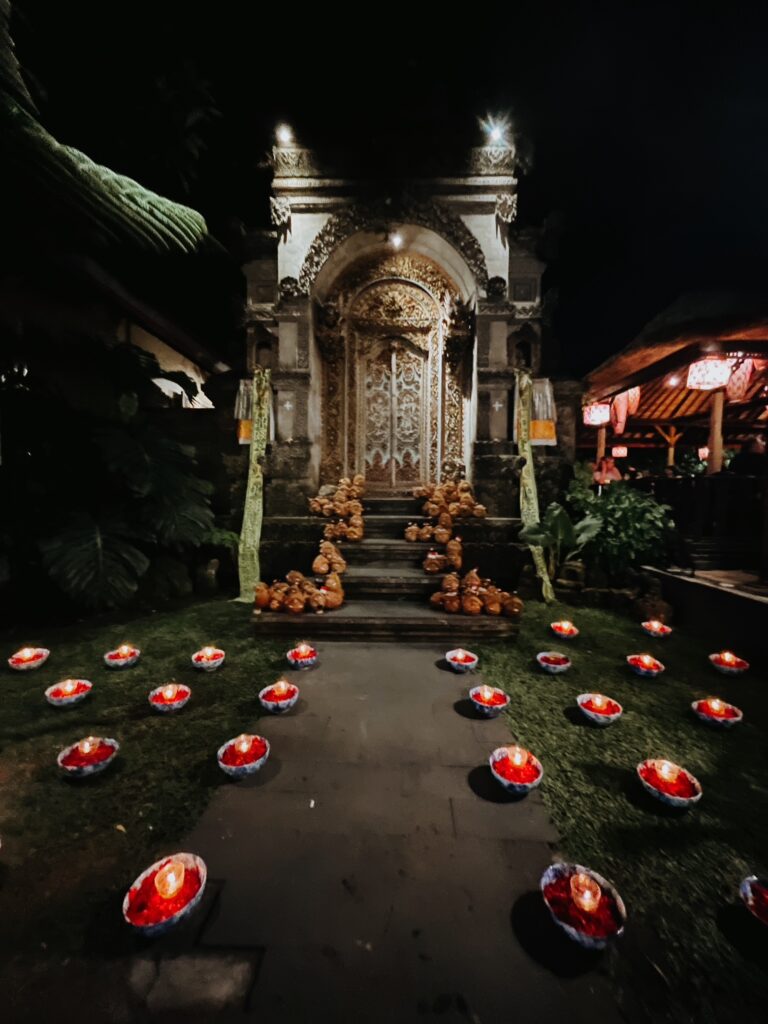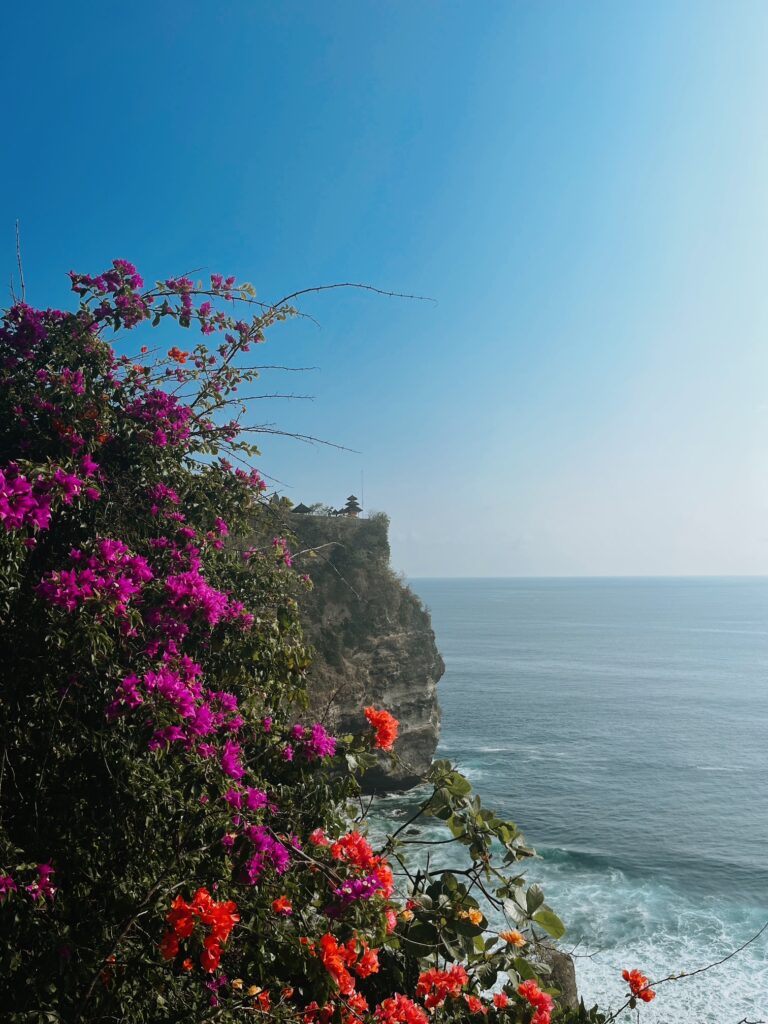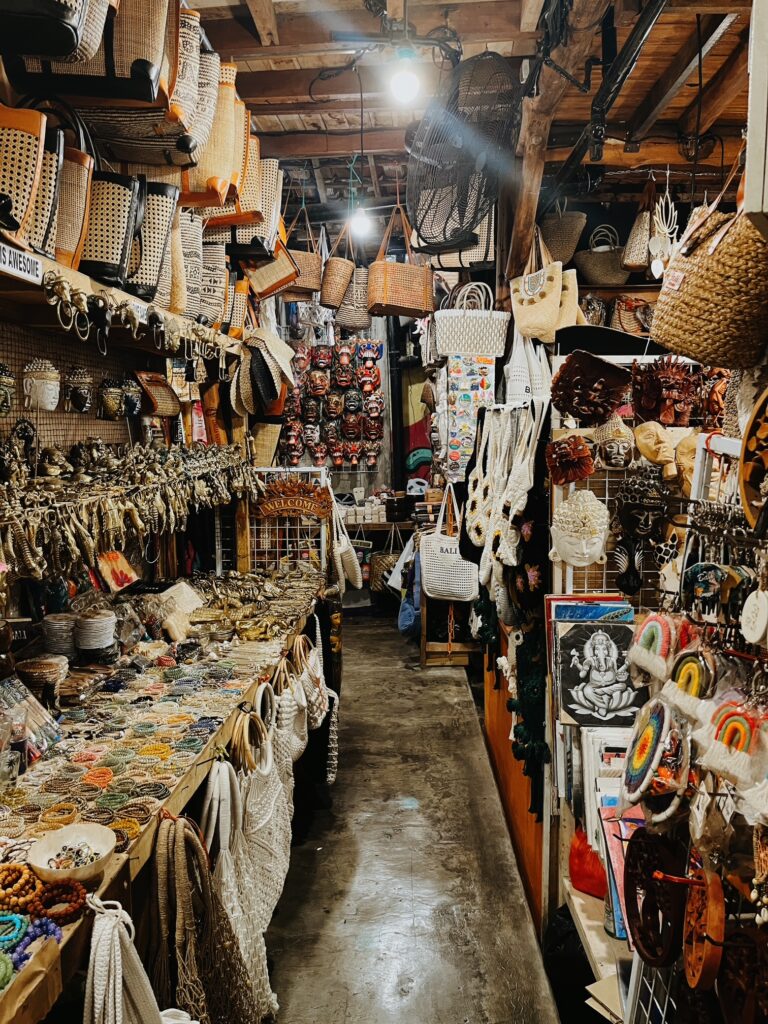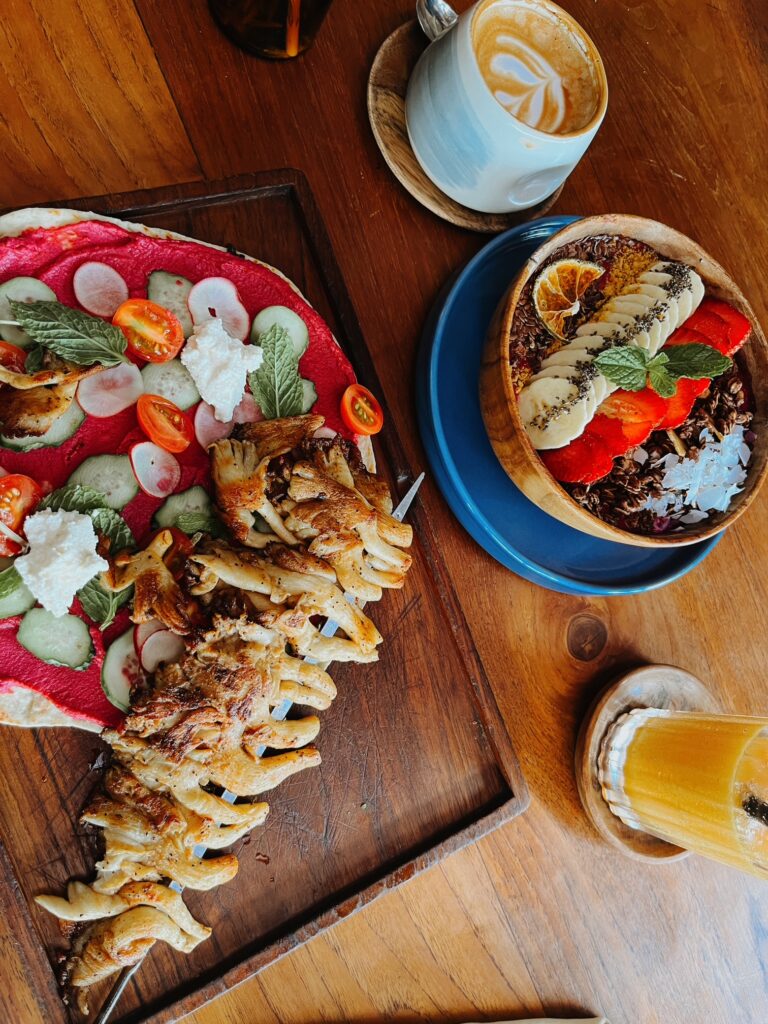Bali is beyond beautiful, but it can also be chaotic, confusing and overwhelming, especially if it’s your first time. Now that I’ve experienced Bali, I have so many little tips to share with you. Let me know in the comments if you find these helpful!

1. Best way to get around Bali is with a car and driver
The best way to get around Bali is by hiring a car with a local driver. Bali’s roads can be crowded, clogged and confusing, especially for first-time visitors. Local drivers know the best routes, can navigate traffic, and often act as helpful guides, sharing anecdotes and stories about local culture and attractions. It’s a comfortable and convenient option, especially for exploring distant areas like Ubud, Uluwatu, or the northern parts of the island. Prices are usually affordable and can be negotiated for full-day or half-day trips. A full day trip, usually around 8 hours, costs 800 IDR.
2. The cheapest way to get around is by hiring motorbikes
The cheapest and most flexible way to get around Bali is by renting a motorbike. Daily rentals are very affordable, and motorbikes allow you to navigate through traffic and access remote areas that cars can’t reach. However, always wear a helmet, carry an international driving permit, and ensure you’re comfortable riding in Bali’s sometimes hectic traffic. Renting from reputable providers and checking the bike’s condition before hire can help avoid issues.

3. Use Grab and Go-jek for cab hailing
Grab and Go-jek are popular and reliable ride-hailing apps in Bali, offering affordable transportation options for cars and motorbikes. They are a safer and more cost-effective alternative to traditional taxis – make sure to agree on a price and payment options before the ride. However, some tourist areas and taxi-dominated zones may restrict ride-hailing services, so be prepared to walk a bit to meet your driver.
4. Plan your day to include only 1 -2 attractions per day
Bali’s traffic and travel times between destinations can be unpredictable, so it’s best to plan for only 1–2 main attractions per day. This allows you to fully enjoy each experience without feeling rushed. Whether it’s exploring temples, lounging on beaches, or visiting waterfalls, a relaxed itinerary gives you time to appreciate Bali’s beauty and culture while avoiding travel fatigue.
5. Steer away from the most popular attractions
While Bali’s famous spots like Tanah Lot, Uluwatu Temple, and Tegallalang Rice Terraces are stunning, they can be crowded and touristy. For a more authentic and peaceful experience, explore lesser-known destinations like Sidemen and the waterfalls in the north of Bali. These off-the-beaten-path locations offer beautiful scenery and a chance to connect with local culture without the crowds.

6. Laundromats are readily available and super cheap
Laundromats are widely available across Bali and offer very affordable services – usually cheaper than hotels. Most are small, family-run businesses that provide wash, dry, and fold services with quick turnaround times—usually within a few hours. Prices are typically charged per kilogram, making it a cost-effective option for travellers.
7. Respect the Balinese Canang saris
Canang saris are small, daily offerings made by Balinese Hindus, placed on the ground in front of temples and homes. These offerings, made from woven palm leaves, flowers, and incense, are a symbol of gratitude and spiritual balance. Be mindful when walking on pavements to avoid stepping on them, as it is considered disrespectful.
8. Dress modestly and respect temple etiquette
When visiting Bali’s temples, it’s important to dress modestly – both men and women should cover their shoulders and knees. Wearing a sarong and sash is often required, and many temples provide them for free or a small rental fee. Most temples are open for public viewing, however, the altars are restricted to Balinese Hindus who would like to make offerings and prayers.

9. Be aware of Bali Belly and carry some medication with you
The notorious “Bali Belly” refers to traveller’s diarrhoea caused by consuming contaminated food or water. I would advise drinking only bottled or filtered water, avoid eating raw and uncooked vegetables and meats, and eating at reputable restaurants. Carry some medication like activated charcoal, probiotics, or anti-diarrhoeal tablets (like Imodium) in case symptoms occur.
10. Master the art of bargaining
Bargaining is a common practice in Bali, especially in local markets, souvenir shops, and with street vendors. Start by offering about half of the initial asking price and negotiate politely from there. Keep the conversation friendly and smile—Balinese vendors appreciate respectful haggling. Agree on a price that you think is fair – but also be mindful that these are local vendors and a small price difference can mean a lot for them.
11. Exchange money once you’re in Bali
I know this is contrary to popular belief but hear me out. It’s best to exchange your money after arriving in Bali, as local currency exchange rates are often more favourable than those in your home country. Authorised money exchanges in popular tourist areas like Kuta, Seminyak, and Ubud offer competitive rates. Always count your money carefully and choose reputable exchanges—avoid places with unusually high rates, as they may be scams.

12. Paying by card includes a small surcharge in most places
When paying by card in Bali, many businesses—especially smaller ones—may charge a small surcharge, typically around 2-3%. This is common in restaurants, shops, and cafes, so it’s always a good idea to check if there’s an additional fee before paying. To avoid surcharges, consider paying with cash, which is widely accepted and often preferred in many places.
13. Book Kecak Dance Tickets Online for Convenience
You can easily book tickets for the famous Kecak Fire Dance online, especially for popular venues like Uluwatu Temple. Purchasing tickets in advance ensures you get a spot, as shows often sell out due to high demand. Online booking also allows you to compare prices and avoid long queues at the venue. There are also several different dance forms you can witness, including Barong, Legong etc. Kecak Fire Dance happens to be the most popular and only takes place in temples.

14. Buy a local sim card
A local SIM card is often cheap and a great way to stay connected. From personal experience, Telkomsel is a reliable and budget friendly telecom company in Bali. Their SIM cards are readily available in supermarkets, airports, and local shops. Having a local SIM allows you to access maps, ride-hailing apps, and stay in touch without relying on Wi-Fi.
15. Try local food at Warungs
For an authentic and budget-friendly dining experience, try local food at warungs—small, family-owned eateries serving traditional Indonesian and Balinese dishes. Popular options include Nasi Goreng (fried rice), Mie Goreng (fried noodles), and Satay. Warungs offer delicious home-cooked meals at affordable prices, often in a casual and welcoming atmosphere.

16. The beaches in the south are stunning
Bali’s southern region is home to some of the island’s most beautiful beaches, perfect for sunbathing, surfing, and relaxing. Beaches like Padang Padang, Dreamland, and Bingin offer soft white sand and clear blue waters, while Uluwatu and Balangan are famous for their world-class surfing. For a more luxurious vibe, Nusa Dua features pristine beaches and high-end resorts.
17. Carry toilet paper with you
It’s a good idea to carry toilet paper or tissues with you while exploring Bali, as many public restrooms and local establishments may not provide it. Instead, traditional Indonesian bathrooms often use a water hose for cleaning.
18. Not all beach clubs have an entry fee
Many of Bali’s popular beach clubs offer free entry, allowing you to relax by the pool or on the beach without paying an entrance fee. However, most have a minimum spend requirement on food and drinks, especially for premium seating or daybeds like La Brisa and Finns Beach Club.

19. It’s a great destination for vegans and vegetarians
Bali is an excellent destination for vegans and vegetarians, offering a wide variety of plant-based options in restaurants, cafes, and warungs. Many eateries in areas like Ubud, Canggu, and Seminyak specialise in healthy, organic, and vegetarian dishes. You can find everything from vegan rendang to raw food, smoothies, and dairy-free desserts. Bali’s vibrant food scene emphasizes fresh, locally sourced ingredients, making it easy for plant-based eaters to find delicious meals.

